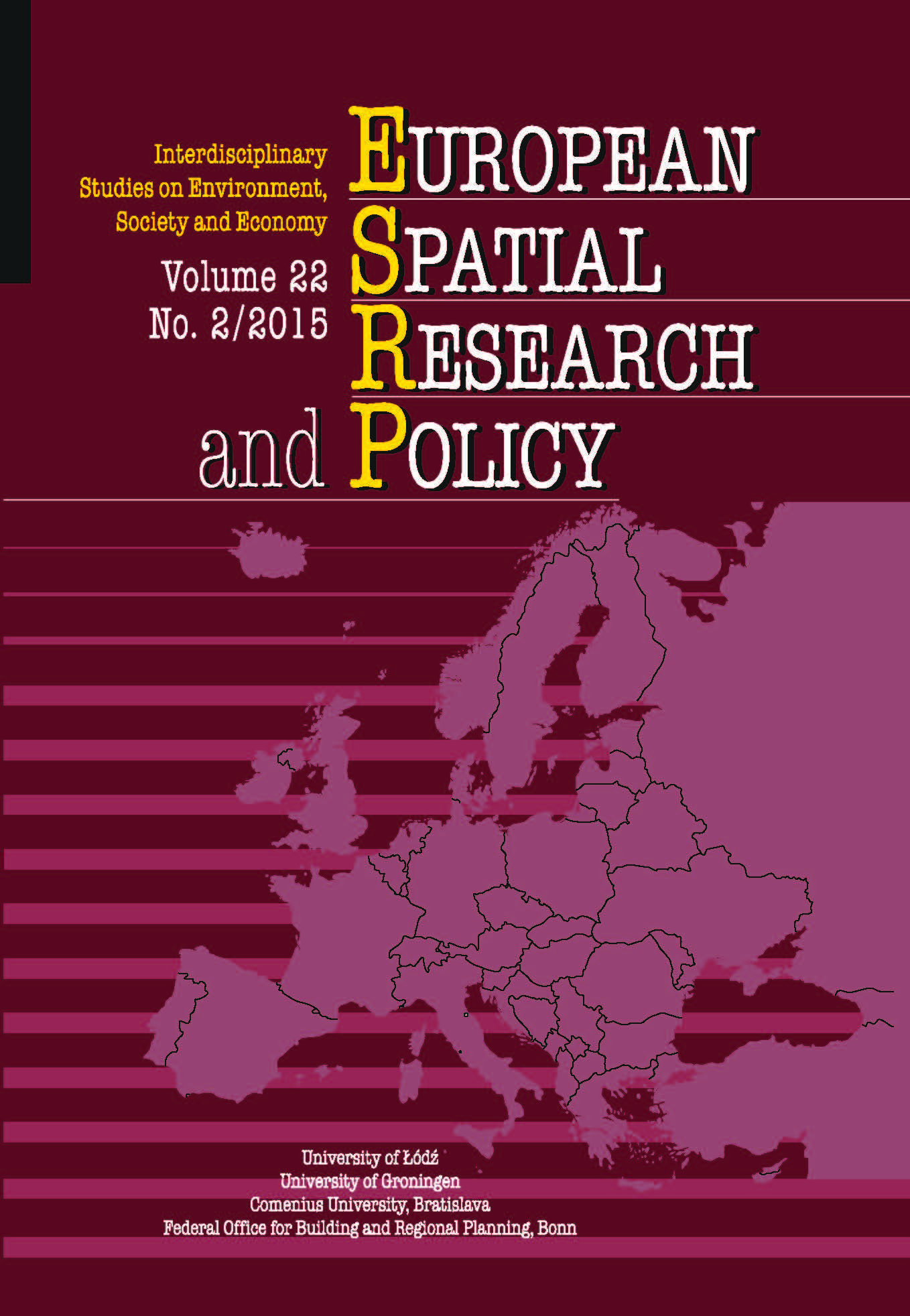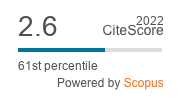Planning Practices for the Protection of Cultural Heritage: Lessons Learnt from the Greek UNESCO Sites
DOI:
https://doi.org/10.1515/esrp-2015-0028Keywords:
monumental heritage, cultural landscapes, spatial planning, UNESCO sites, GreeceAbstract
As in all countries worldwide, in Greece too, sites selected to become part of the UNESCO’s world heritage are representative samples of the country’s monumental heritage and therefore constitute exemplars of planning adopted for their spatial protection.
By the case study conducted in the Greek UNESCO sites, it was revealed that, despite the fact that most of the monuments are subjects of multiple zoning, little is accomplished for their spatial protection. This is either because zoning and planning launched by the Ministry for the Environment is absent or taking too long to get approved or because zoning deriving from the Ministry of Culture is void of spatial regulations. This means that on the one hand the Ministry for the Environment should proceed at a faster pace to the elaboration of Local Spatial Plans that are necessary especially in the case of monuments in rural settings, while on the other hand the Ministry of Culture should immediately proceed to the revision of Protection Zones A and B, so they fall into the guidelines of the new Law 3028 and they acquire spatial restrictions and regulations; a condition that can only be achieved with the collaboration among Spatial Planners and Archaeologists and among competent bodies.
Downloads
References
BERIATOS, E., PAPAGEORGIOU, M., LAINAS, I. and NIKOLAKOPOULOU, Ch. (2011), ‘Towards a sustainable management of cultural heritage in Greek cities and Regions: The role of spatial planning’, paper in the 47th ISOCARP Congress ‘Liveable cities – Urbanizing World: Meeting the Challenge’, organized by ISOCARP and the People’s Government of Wuhan Municipality (UPSC), Wuhan (China), 24–28 October 2011.
Google Scholar
CHRISTOFILOPOULOS, C. (2002), Cultural environment − spatial planning and sustainable development: shaping cultural (man-made) environment through spatial and urban planning: the city of the 21st century, Athens: P. N. Sakkoulas (in Greek)
Google Scholar
COUNCIL OF EUROPE (2005), ‘Framework Convention on the Value of Cultural Heritage for Society’.
Google Scholar
COUNCIL OF EUROPE (2000), ‘European Landscape Convention’.
Google Scholar
GEPPERT, A. (2014), ‘Planning systems facing heritage issues in Europe: from protection to management, in the plural interpretations of the values of the past’, European Spatial Research and Policy, Vol. 21 (2), pp. 9–12.
Google Scholar
GREFFE, X. (2004), ‘Is heritage an asset or a liability?’, Journal of Cultural Heritage, 5 (3), pp. 301–309.
Google Scholar
KARYBALI-TSIPTSIOU, G. (2004), Monuments and their Habitat according to the Law 3028/2002, Athens−Thessaloniki: Sakkoula (in Greek).
Google Scholar
KOZLOWSKI, J. and VASS-BOWEN, N. (1997), ‘Buffering external threats to heritage conservation areas: a planners perspective’, Landscape and Urban Planning, Vol. 37 (3–4), pp. 245–267.
Google Scholar
KUNZMANN, K. R. (2004), ‘Culture, creativity and spatial planning’, Town Planning Review, 75 (4), pp. 383–404.
Google Scholar
KURZ, P., RULAND, G., ZECH, S. (2014), ‘Towards governance for the management of cultural landscapes’, European Spatial Research and Policy, Vol. 21 (2), pp. 67–82.
Google Scholar
PAPAGEORGIOU, M. and POZOUKIDOU, G. (2014), ‘Traditional settlements in Greece: spatial planning and protection issues’, Geographies, Vol. 24, pp. 107–125 (in Greek).
Google Scholar
PAVLOGEORGATOS, G. (2003), Conservation of material cultural heritage, Athens: Epikentro (in Greek).
Google Scholar
TROVA, E. (2003), The cultural environment in the constitution, Athens: Sakkoulas (in Greek).
Google Scholar
TWEED, Ch. and SUTHERLAND, M. (2007), ‘Built cultural heritage and sustainable development’, Landscape and Urban Planning, Vol. 83 (1), pp. 62–69.
Google Scholar
UNESCO (1972), ‘World Heritage Convention’, Paris: UNESCO.
Google Scholar
VECCO, M. (2010), ‘A definition of cultural heritage: from the tangible to the intangible’, Journal of Cultural Heritage, 11 (3), pp. 321–324.
Google Scholar
VOS, W. and MEEKES, H. (1999), ‘Trends in European cultural landscape development perspectives for a sustainable future’, Landscape and Urban Planning, Vol. 46 (1–3), pp. 3–14.
Google Scholar
Law 5351 (1932), ‘Antiquities’ (Official Gazette 275/A/24.08.1932).
Google Scholar
Law 1469 (1950), ‘Protection of modern built heritage and works of art subsequent of 1830’ (Official Gazette 169/A/7-8-1950).
Google Scholar
Law 1337 (1983), ‘Urban development and planning of cities and settlements of Greece’ (Official Gazette 33/A/14-3-1983).
Google Scholar
Law 1650 (1986), ‘Protection of the Natural Environment’ (Official Gazette 160/A/16-10-1986).
Google Scholar
Law 3028 (2002), ‘Protection of Antiquities and Cultural Heritage’ (Official Gazette 153/A/28-6-2002).
Google Scholar
Law 3937 (2011), ‘Conservation of Biodiversity’ (Official Gazette 60/A/31-3-2011).
Google Scholar
http://www.unesco-hellas.gr − Hellenic National Commission for UNESCO (for Greek UNESCO sites)
Google Scholar
http://whc.unesco.org/ − UNESCO official site
Google Scholar
http://www.yppo.gr − Hellenic Ministry of Culture and Tourism
Google Scholar
http://listedmonuments.culture.gr − Hellenic Ministry of Culture and Tourism (Permanent List of monuments)
Google Scholar
http://odysseus.culture.gr − Hellenic Ministry of Culture and Tourism (database MCT – ODYSSEUS)
Google Scholar
http://www.ypeka.gr − Ministry of the Environment, Energy and Climate Change (database of Zones for Building Activity Control and Local Spatial Plans)
Google Scholar
http://itia.ntua.gr/filotis − National Technical University of Athens (Filotis Database for Landscapes of Outstanding Natural Beauty)
Google Scholar
Downloads
Published
How to Cite
Issue
Section
License

This work is licensed under a Creative Commons Attribution-NonCommercial-NoDerivatives 4.0 International License.














